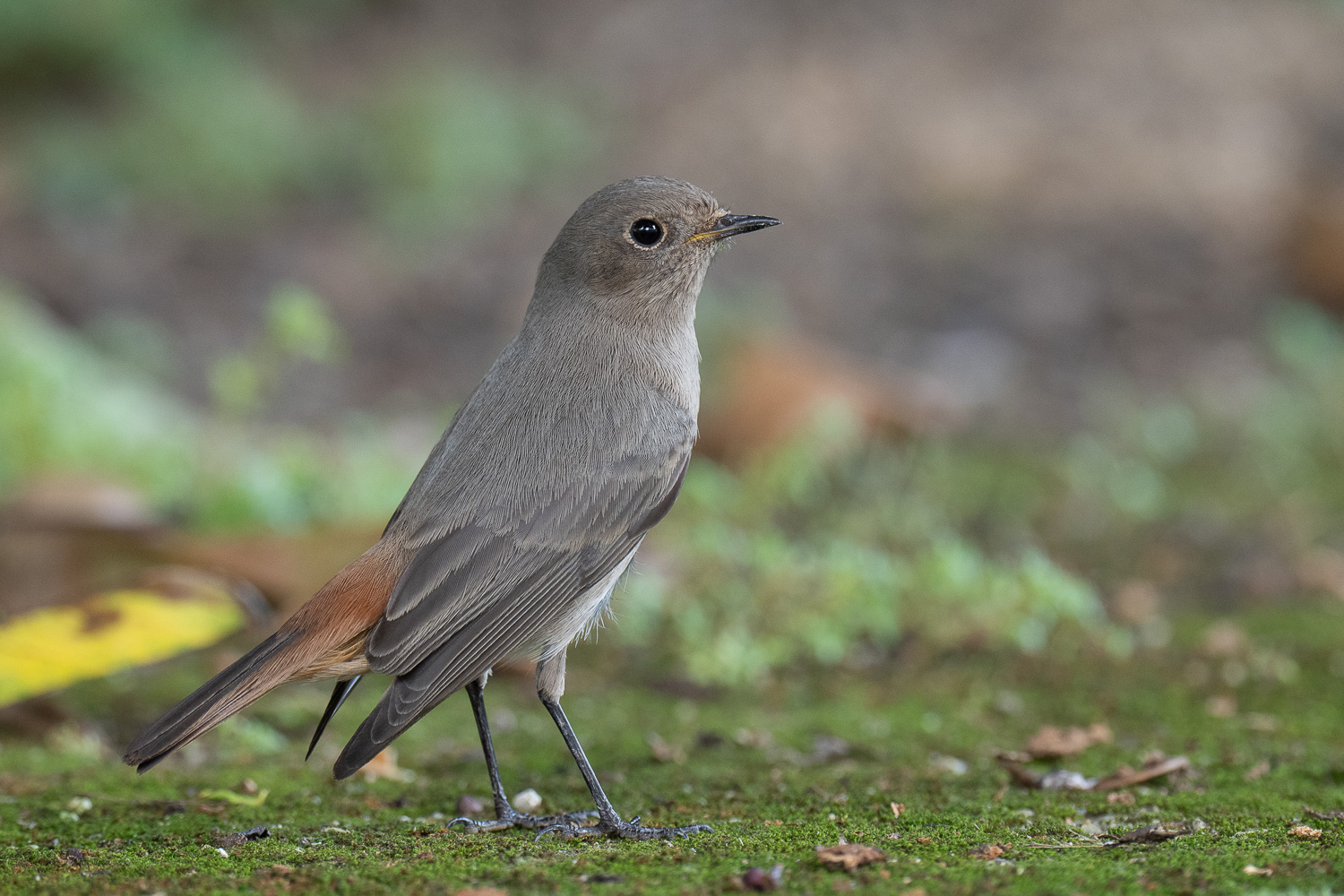Scientific Name: Phoenicurus ochruros
Malay Name: Murai-Jingga Hitam
Chinese Name: 赭红尾鸲
Range: Western races gibraltariensis and aterrimus generally resident in Europe and North Africa. Eastern races essentially occupy the remainder of Eurasia, with ochruros and semirufus occurring as short-distance migrants in parts of Turkey and the Middle East. But most likely to occur as vagrants in Southeast Asia and Singapore are phoenicuroides and rufiventris. "Eastern Black Redstart", comprising these two subspecies, is a proposed split. Subspecies phoenicuroides is a medium-distance migrant breeding in central Asia and wintering in the Arabian Peninsula, northeastern Africa and south Asia; records of vagrancy in western Europe probably refer to this subspecies. Subspecies rufiventris is a short-distance migrant that breeds further east in China and winters in south Asia.
Taxonomy: Polytypic. Subspecies are: gibraltariensis, ochruros, semirufus, phoenicuroides, murinus, rufiventris.
Size: 14-15 cm
Identification: Adult males of race phoenicuroides show grey-black back, head, and upper breast contrasting with orange-rufous lower breast, belly, and vent; rufiventris is similar, but larger, more richly-toned rufous below, and blacker on upperparts. Female is grey-brown on upperparts and underparts. First-winter males are highly variable; some attain near-adult plumage by autumn, while most retain a female-like plumage through the winter. Separated from Daurian Redstart in all plumages by the lack of white wing-spot, which is always present in that species. Most likely confusion species is Common Redstart, which breeds from western Europe to far northwestern China and winters in sub-Saharan Africa. It differs by being noticeably paler in all plumages and always shows some orange-rufous tones on underparts above the vent. The spacing of primaries, visible on photos showing a back view, is the most reliable separator. However, an in-depth discussion of this feature is impossible here; instead see Laurens B Steijn's article in Dutch Birding 27(3), linked in the references below. Adult males separated from Hodgson's Redstart (short-distance migrant in China and northern Myanmar) by lack of white wing-spots; females and first-winter birds of that species are noticeably paler and browner, with less grey tones.
Similar looking species: Daurian Redstart
Habitat: Rocky areas and mountain-tops, open country, meadows, and scrubland; also frequently observed in highly urban settings, including villages, towns, and cities.
Behaviour/Ecology: Often feeds on ground, primarily on invertebrates, but also takes fruits from trees.
Local Status: Vagrant
Conservation Status: Least Concern (BirdLife International 2019)
- Checklist Revision for February 2022 (Revisions)
- My Accidental Sprint Year (Blog)
- Year in Review – 2021! (Blog)
- Messages from the Cinereous and Streaked Bulbuls (Science)
- Status of the Oriental Turtle Dove in Singapore (Significant Records)
Migrant bar chart (see more bar charts):
Conservation Status: IUCN Red List Page
Sound Recordings: xeno-canto Link
Wikipedia Entry: Wikipedia Link
eBird Species page: eBird (Black Redstart)
References:
BirdLife International. (2019). Phoenicurus ochruros. The IUCN Red List of Threatened Species 2019. https://dx.doi.org/10.2305/IUCN.UK.2019-3.RLTS.T22710051A155610899.en. Accessed on 1 January 2023
Steijn, L. B. (2005). Eastern Black Redstarts at Ijmuiden, the Netherlands, and on Guernsey, Channel Islands, in October 2003, and their identification, distribution and taxonomy. Dutch Birding, 27(3), 171-194.
Collar, N. (2020). Black Redstart (Phoenicurus ochruros), Version 1.0. In del Hoyo, J., Elliott, A., Sargatal, J., Christie, D. A., & de Juana, E. (Eds.), Birds of the World. Cornell Lab of Ornithology, Ithaca, NY, USA. https://doi.org/10.2173/bow.blared1.01
Clement, P., & Rose, C. (2016). Robins and Chats. Christopher Helm.
RECOMMENDED CITATION
Bird Society of Singapore. (n.d.). Black Redstart. Retrieved on May 2, 2024 from https://singaporebirds.com/species/black-redstart.





